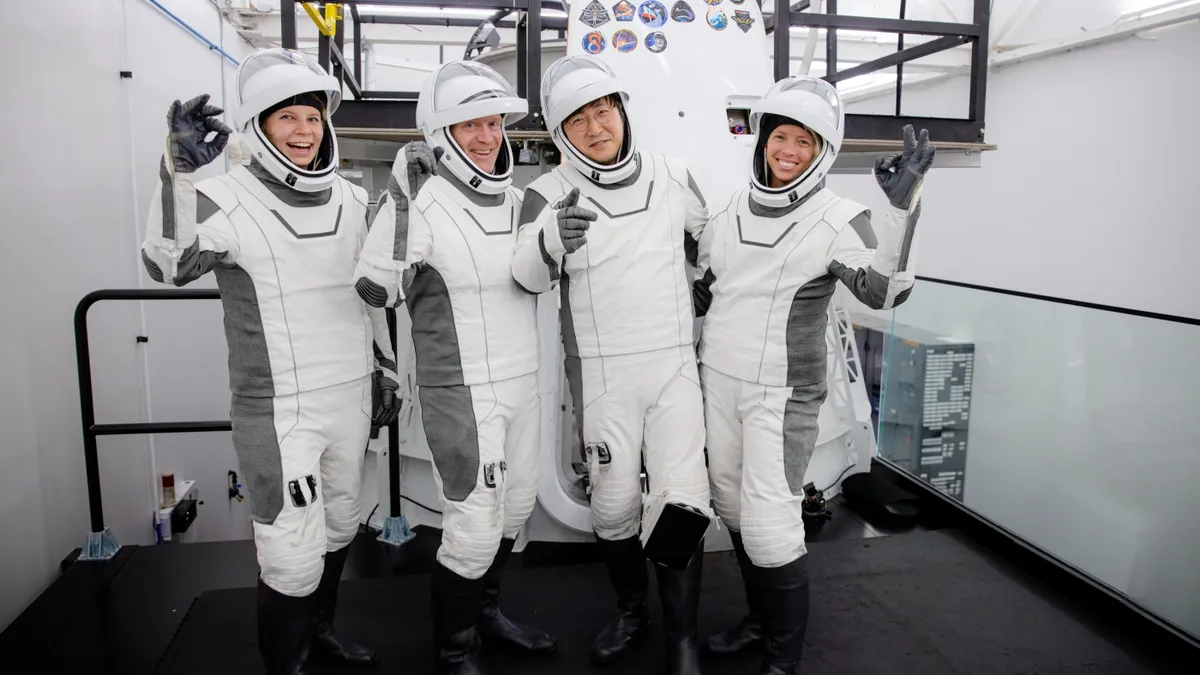
In an exciting development for the future of space exploration, SpaceX, under the command and funding of cryptocurrency entrepreneur Chun Wang, is set to launch its first crewed mission to polar orbit as early as Monday evening. This innovative mission will not only mark the inaugural journey to polar orbit but will also focus on cultivating mushrooms as a crop in the unique conditions of space. The flight, which is expected to last between three to five days, will be propelled into the cosmos by a Falcon 9 booster.
The mission, aptly named Fram2, pays homage to the historic Fram ship, a steam-and-sail powered vessel utilized by Norwegian explorer Roald Amundsen during his groundbreaking expedition to the South Pole from 1910 to 1912. This connection not only highlights the spirit of exploration but also underscores the mission's aim to push the boundaries of our understanding of life in space.
A diverse team of four international astronauts will embark on this pioneering journey. The crew includes Chun Wang from Malta, Jannicke Mikkelsen, a talented film director and cinematographer from Norway, Rabea Rogges, an electrical engineer and polar scientist from Germany, and Eric Philips, a seasoned polar explorer and private astronaut from Australia. Together, they represent a blend of creativity, technical expertise, and exploration experience, essential for the mission's success.
Unlike previous missions that orbited the Earth in a West-to-East direction, the Fram2 mission will utilize a polar orbit, allowing the spacecraft to circle the Earth over both the North Pole and Antarctica. While astronauts have yet to travel in polar orbits, such trajectories are commonly used by satellites for essential tasks including Earth observation, mapping, weather data collection, and environmental monitoring. This unique orbit offers comprehensive coverage of the planet, a significant advantage for various scientific studies.
One notable aspect of the Fram2 mission is the increased exposure to ionizing radiation over polar regions. According to Kevin Lewis, a planetary scientist and associate professor at Johns Hopkins University, the radiation dose experienced by the crew is expected to be only a few times higher than in typical orbits. For a short-duration flight, this heightened exposure is not anticipated to pose a significant risk, barring extreme solar flares that could unleash charged particles, X-rays, and gamma rays toward Earth.
The Fram2 mission will facilitate 22 studies and experiments, one of which aims to capture radiation measurements within the Dragon spacecraft and evaluate individual radiation exposure levels of each crew member. Another groundbreaking study, conducted on behalf of FOODiQ Global, will explore the cultivation of oyster mushrooms aboard the spacecraft. Dr. Flávia Fayet-Moore, a space nutritionist and CEO of FOODiQ Global, emphasizes that while mycelium has been previously grown in microgravity aboard the International Space Station, Fram2 represents the first attempt to cultivate mushrooms as a crop.
Dr. Fayet-Moore describes mushrooms as an ideal candidate for space agriculture, noting their unique growth patterns and ability to complement plant systems, making them suitable for long-duration exploration missions to the Moon and Mars. Additionally, mushrooms possess a natural capacity to produce vitamin D when exposed to ultraviolet light, a critical nutrient for astronauts to counteract bone loss in the microgravity environment of space. The selection of oyster mushrooms for this study is strategic, as they are resilient, quick to grow, and easy to cultivate.
With the unique nature of space missions, Dr. Fayet-Moore humorously points out that approximately 20% of the population dislikes mushrooms. This presents an interesting challenge, as the astronaut selection criteria are already stringent, and adding a requirement to be willing to consume mushrooms during long-duration flights could complicate the process. Nevertheless, the Fram2 mission aims to expand our understanding of food cultivation in space, paving the way for future exploratory missions.